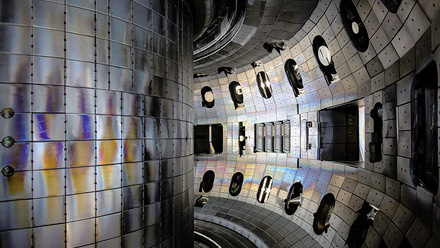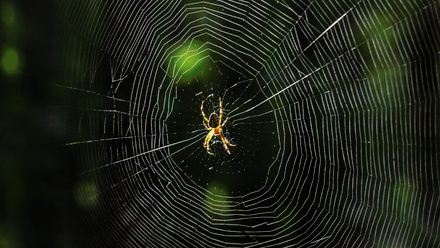Super-black wood steals the limelight
A ‘super-black wood’ that can absorb more than 99.3% of UV and visible light was found by accident.

The scientists at the University of British Columbia (UBC), Canada, were experimenting with high-energy plasma to make basswood more water repellent when they made the discovery.
Trademarked Nxylon (niks-uh-lon), the material can be fabricated from basswood and European lime wood to make watch faces and jewellery, and could also enhance telescopes.
Dr Philip Evans, who co-led the experiments with PhD student Kenny Cheng, shares how the plan was to originally enhance basswood’s water repellence.
'The critical step that led to our discovery of super-black wood was preparing smooth flat and sanded samples that exposed end grain – and cut ends of wood’s cells – to plasma,' he explains. 'This planar surface of wood is normally neglected because it represents an insignificant component of timber used commercially.'
Evans explains that when transverse surfaces are exposed to plasma, the walls of the wood cells become thinner, deep pits are created and the wood’s uppermost surface becomes a 'tangled web of thin fibrils'.
The significant decrease in the wood surface’s density is a physical feature common with other synthetic super-black materials, he adds.
After the researchers removed the wood surface’s cellulose to create a lignin and carbon-rich material, they found that light impacting the plasma-modified wood was absorbed and very little light was reflected – 0.68% within the wavelength range of 300-700nm.
Texas A&M Department of Physics and Astronomy, which benchmarks super-black materials for optical instruments, confirmed the material was super black by using a Hitachi dual beam UV-Visible-NIR spectrophotometer.
The UBC team has named and trademarked the material Nxylon, a neologism created from the Greek goddess of the night (Nyx) and the Greek word for wood (xylon), explains Evans.
So far, the researchers have developed small-scale product prototypes with the material, which they say is lightweight and easy to laser cut into square, round and triangular shapes of jewellery, and circular watch faces.
The basswood is first cut into 2.5mm thick pieces that measure 54mm in width and 108mm in length. An orbital sander then sands the pieces to a thickness of 0.6-0.8mm, after which they are placed in a vacuum desiccator for 48 hours. Finally, a plasma reactor treats the basswood samples, altering the material’s surface structure so they become super-black transverse surfaces.
Having ordered watch and jewellery blanks, the team then inserts the super-black veneer, which are protected with a polymer or toughened glass, into the blanks.
'The super-black material we have developed gives ghost-like glimpses of its organic biological origins,' says Evans. 'For example, watch faces viewed head on are super-black, but if the watch is tilted, then the feint attractive figure of the wood’s growth rings becomes apparent.'
Evans adds people are increasingly drawn to renewable organic materials when they can offer the performance characteristics of synthetic counterparts.
Another indicator of Nxylon’s super blackness is that it remains black even when it is sputter coated with a metal like gold, to make the wood electrically conductive for scanning electron microscopy, he says.
The researchers are working with companies that make high-end watches and jewellery to see if the material can be used for commercial products. It is feasible to develop a plasma reactor to modify large samples, Evans adds.







